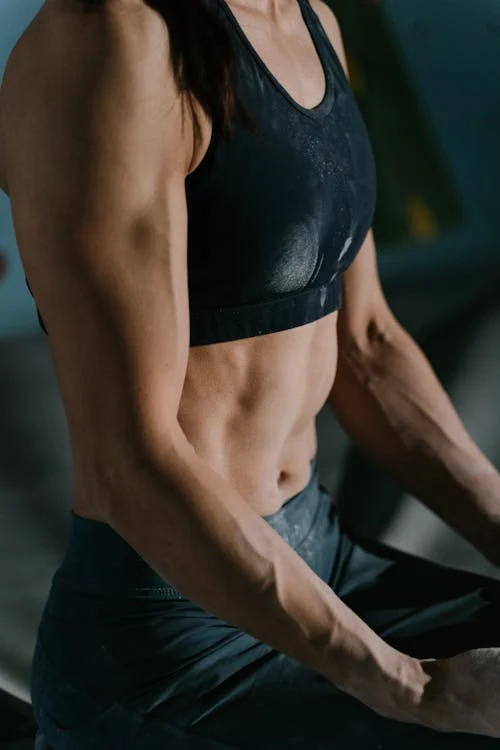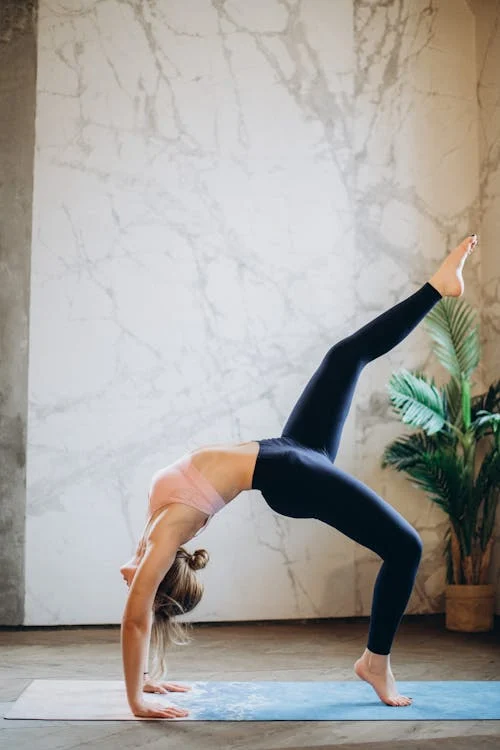Core, core, core.. what does this mean?



Your tummy muscles are like an onion – there are inner layers and outer layers.
Outer Core
Your outer layers consist of muscles such as rectus abdominus also known as the “six pack muscle” and your obliques. When you do crunches at the gym, these are the muscles you are working.
However, there are issues with overworking the outer core…
It means you are not working the inner core, the part where most of us are actually the weakest! This is what is most often missed in strength training.
Too many crunches can place too much pressure on lumbar discs and can lead to further disc injury, for those with lower back issues.
Too many crunches also can cause our hip flexors to over work, which can pull our trunk into a bent forward position, which further encourages slumping.
Physiotonic classes will help you to break this cycle and address muscle imbalances! Whilst some of our exercises will work the outer core to help build your overall body strength, Physiotonic will concentrate more on your inner core.
Your tummy muscles are like an onion – there are inner layers and outer layers.
Outer Core
Your outer layers consist of muscles such as rectus abdominus also known as the “six pack muscle” and your obliques. When you do crunches at the gym, these are the muscles you are working.
However, there are issues with overworking the outer core…
It means you are not working the inner core, the part where most of us are actually the weakest! This is what is most often missed in strength training.
Too many crunches can place too much pressure on lumbar discs and can lead to further disc injury, for those with lower back issues.
Too many crunches also can cause our hip flexors to over work, which can pull our trunk into a bent forward position, which further encourages slumping.
Inner Core
When you go to the gym, what is often missed is the failure to pay attention to your inner core. This is the deepest layer of your trunk muscle group, where the muscle “transverse abdominus” (TA) exists. TA is your main postural muscle that is like an old fashioned corset or a column of strength that should wrap around your spine to give you your stability.
Physiotonic will help you improve your strength from the inside out, so you have a strong inner framework.
Physiotonic classes will help you to break this cycle and address muscle imbalances! Whilst some of our exercises will work the outer core to help build your overall body strength, Physiotonic will concentrate more on your inner core.
Inner core
When you go to the gym, what is often missed is the failure to pay attention to your inner core. This is the deepest layer of your trunk muscle group, where the muscle “transverse abdominus” (TA) exists. TA is your main postural muscle that is like an old fashioned corset or a column of strength that should wrap around your spine to give you your stability.
Physiotonic will help you improve your strength from the inside out, so you have a strong inner framework.
Gluteal Strengthening
Typically in our population, we have poor butt muscle strength… You don’t see many butts like that of Usain Bolt’s walking the streets, because this is an area that is typically of low tone! So, a major focus in Physiotonic classes is to improve your buttock bulk and tone.
Advantages of gluteal muscle training from Physiotonic classes:
Helps you run faster!
Helps with back pain: A stronger buttock will help to give you more strength for everyday movements to ultimately reduce load placed on your spine.
Helps with knee pain: Stronger gluteal muscles will help to improve pelvic stability and how your knee tracks. This is important to reduce the load on your knee and knee cap both with everyday movements such as going downstairs, but also with running.
Helps to tone your buttock – a ‘soft’ part of the body in most of us!
Your tummy muscles are like an onion – there are inner layers and outer layers.
Outer Core
Your outer layers consist of muscles such as rectus abdominus also known as the “six pack muscle” and your obliques. When you do crunches at the gym, these are the muscles you are working.
However, there are issues with overworking the outer core…
It means you are not working the inner core, the part where most of us are actually the weakest! This is what is most often missed in strength training.
Too many crunches can place too much pressure on lumbar discs and can lead to further disc injury, for those with lower back issues.
Too many crunches also can cause our hip flexors to over work, which can pull our trunk into a bent forward position, which further encourages slumping.



Flexibility - Get a move on!



Lack of flexibility can be a major problem for office workers, runners and people with back pain.
Because we are sitting for longer at our computers, it is important to stretch what we tighten up during our lack of everyday movements.
In Physiotonic classes, you will learn how to do stretches at home and at the office that will help to improve flexibility. The more of our stretches you learn, the more you can practice at home. The physio’s at Physiotonic can point out to you what exactly you need to work on during the week before the next class.
Stretching is a form of body maintenance that can help to prevent injury and improve relaxation. Take some time out in the week to get more in tune with your body through Physiotonic.
Your tummy muscles are like an onion – there are inner layers and outer layers.
Outer Core
Your outer layers consist of muscles such as rectus abdominus also known as the “six pack muscle” and your obliques. When you do crunches at the gym, these are the muscles you are working.
However, there are issues with overworking the outer core…
It means you are not working the inner core, the part where most of us are actually the weakest! This is what is most often missed in strength training.
Too many crunches can place too much pressure on lumbar discs and can lead to further disc injury, for those with lower back issues.
Too many crunches also can cause our hip flexors to over work, which can pull our trunk into a bent forward position, which further encourages slumping.
Posture - How do I sit, stand, move?
Unfortunately, we are a slouching population.
Physiotonic will help you to train your posture, while improving your overall body strength. Up to half of our class is performed standing to make the exercises more functional.
While focusing on how you are standing, we do drills and exercises to simulate everyday movements. By encouraging your brain to learn to use the correct muscles during movement, you should see a gradual improvement in your posture. Weights and therabands are used in every class to further challenge you.
Not only should you look and feel better in the future, but this will help to improve how you stand and move, empower your running style and prevent back pain and other injuries.
Your tummy muscles are like an onion – there are inner layers and outer layers.
Outer Core
Your outer layers consist of muscles such as rectus abdominus also known as the “six pack muscle” and your obliques. When you do crunches at the gym, these are the muscles you are working.
However, there are issues with overworking the outer core…
It means you are not working the inner core, the part where most of us are actually the weakest! This is what is most often missed in strength training.
Too many crunches can place too much pressure on lumbar discs and can lead to further disc injury, for those with lower back issues.
Too many crunches also can cause our hip flexors to over work, which can pull our trunk into a bent forward position, which further encourages slumping.



Copyright © 2024 Physiotonic